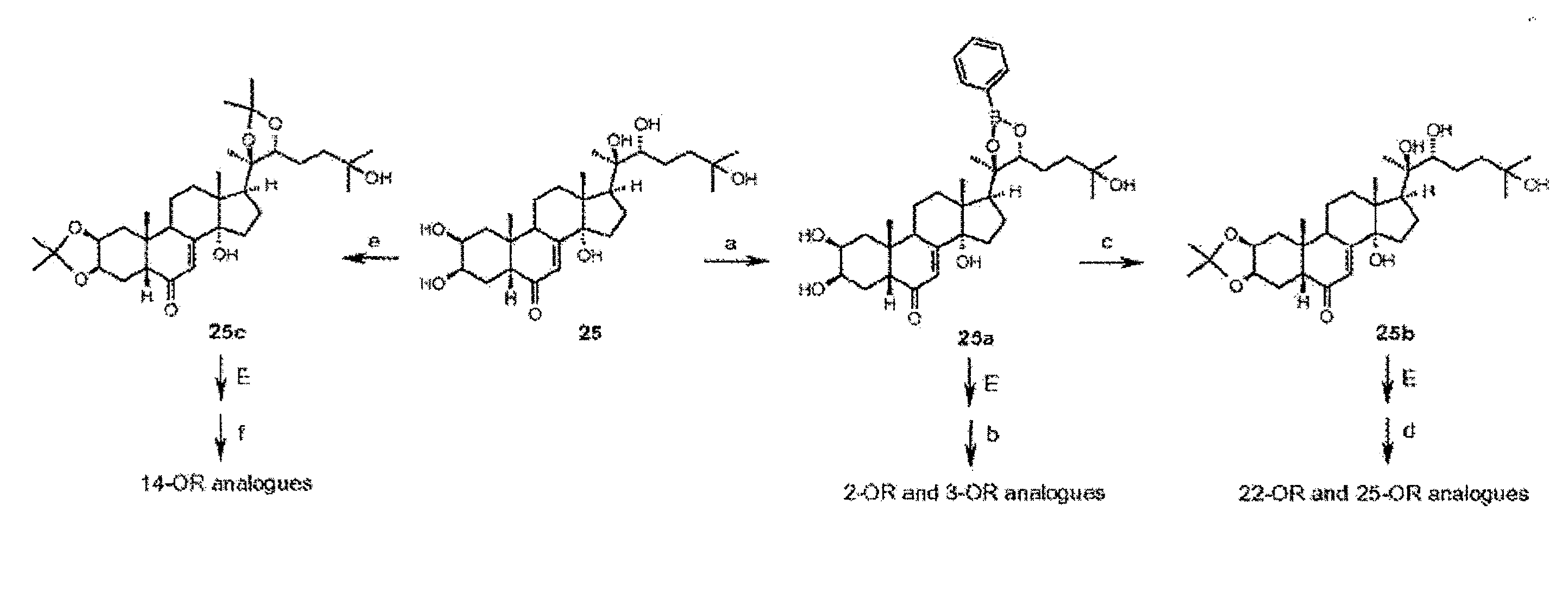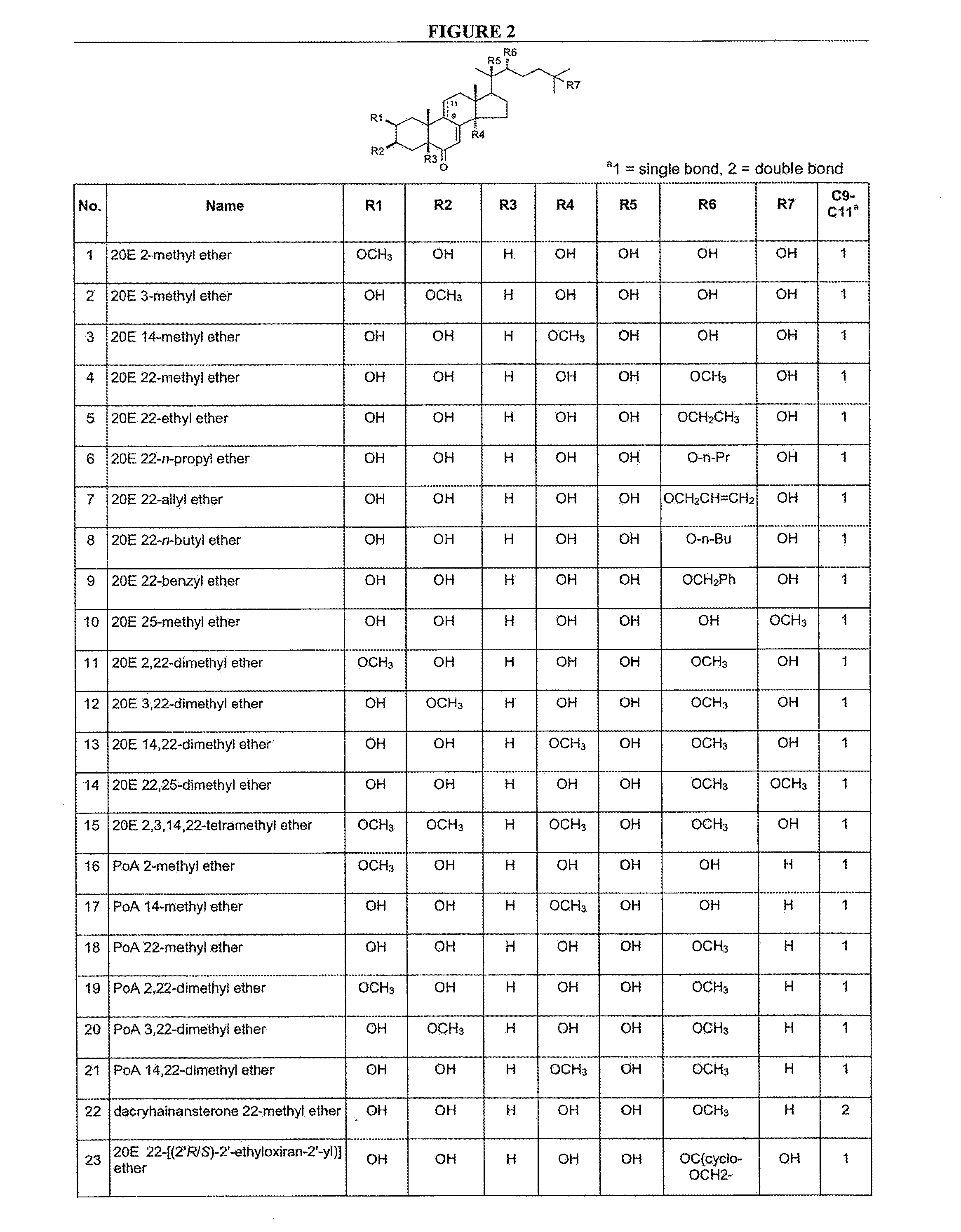Steroidal Ligands and Their Use in Gene Switch Modulation
a technology of steroidal ligands and gene switch, applied in the field of steroid chemistry and controlled gene expression, can solve the problems of limited use of such systems in plants and animals, system leakage and limitations, and limited utility in mammalian gene switch applications
- Summary
- Abstract
- Description
- Claims
- Application Information
AI Technical Summary
Benefits of technology
Problems solved by technology
Method used
Image
Examples
example one
[0307]Disclosed are semi-synthetic steroid modulators of gene-switches. Representative ecdysteroids 20-hydroxyecdysone (20E) and ponasterone A (PoA) were singly- and multiply-methylated at the 2-, 3-, 14-, 22- and 25-positions, or singly-alkylated at the 22 position. The semi-synthetic steroids were assayed in both a natural insect system (Drosophila BII cells) and engineered gene-switch systems in mammalian cells using Drosophila melanogaster, Choristoneura fumiferana and Aedes aegypti EcRs and / or mutants thereof. Gene-switch potency is maintained or enhanced for 20E and PoA methylated at the 22 position. The SAR of the alkylated steroids indicates that the 22-OH is an H-bond acceptor, 25-OH is likely an H-bond donor, and 2-OH and 3-OH are donors and / or acceptors with each other and with EcR. Overall, calculated ADME properties using the membrane-interaction (MI)-QSAR methodology indicate desirable trends toward lower solubility, higher permeability, and higher blood-brain barrier ...
example two
[0355]We assayed a set of forty-two steroids against a group of ten EcRs representing nine arthropod species in a common two-hybrid gene switch format; data from the BII assay and the VGECR / RXR gene switch was interpreted in context. Trends and also unusual potency inversions were tabulated. The EcR sequences were aligned, contact residues from available crystal structures (LBDs from the lepidopteran Heliothis virescens [Hv], the hemipteran Bemisia tabaci [Bt] and the beetle Tribolium castaneum [Tc]) were annotated, and potency correlations between substituent changes on the ligands and residue patterns on the receptors were notated. SAR outliers offer revealing ligands in a ligand dataset. Potency inversions are identified for the construction of orthogonal gene switches.
[0356]We have identified new nanomolar and subnanomolar steroid / EcR combination(s). We also describe more extensive EcR screening data on several rare steroids. EcR sequences in the two-hybrid gene-switch format ar...
PUM
| Property | Measurement | Unit |
|---|---|---|
| Electrical conductance | aaaaa | aaaaa |
| Electrical conductance | aaaaa | aaaaa |
| Electrical conductance | aaaaa | aaaaa |
Abstract
Description
Claims
Application Information
 Login to View More
Login to View More - R&D
- Intellectual Property
- Life Sciences
- Materials
- Tech Scout
- Unparalleled Data Quality
- Higher Quality Content
- 60% Fewer Hallucinations
Browse by: Latest US Patents, China's latest patents, Technical Efficacy Thesaurus, Application Domain, Technology Topic, Popular Technical Reports.
© 2025 PatSnap. All rights reserved.Legal|Privacy policy|Modern Slavery Act Transparency Statement|Sitemap|About US| Contact US: help@patsnap.com



